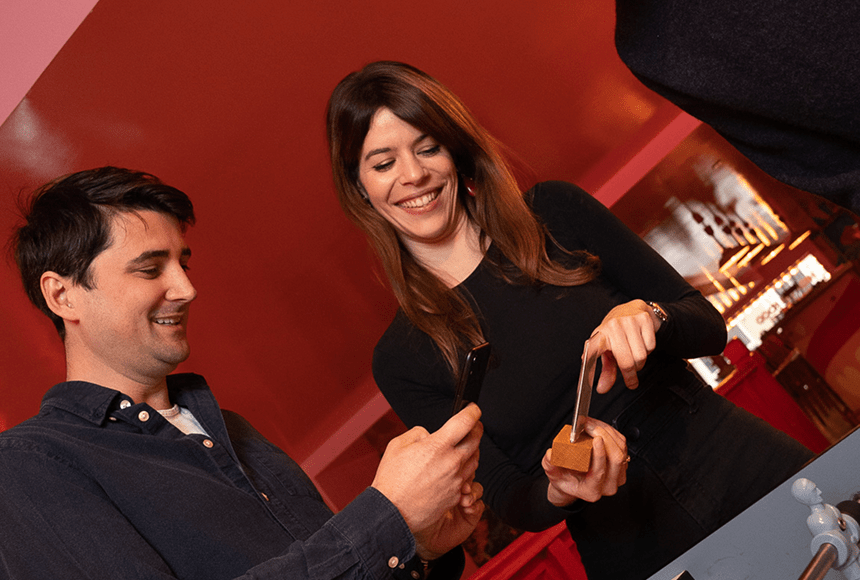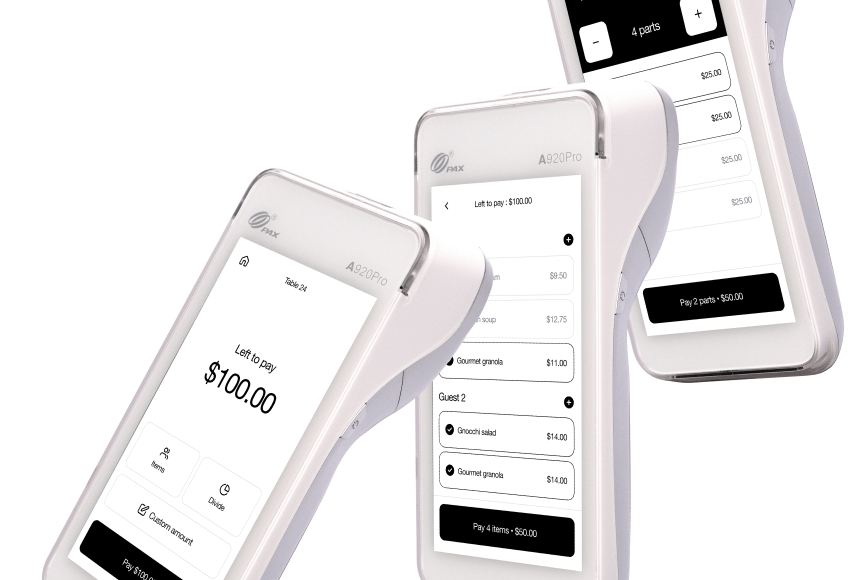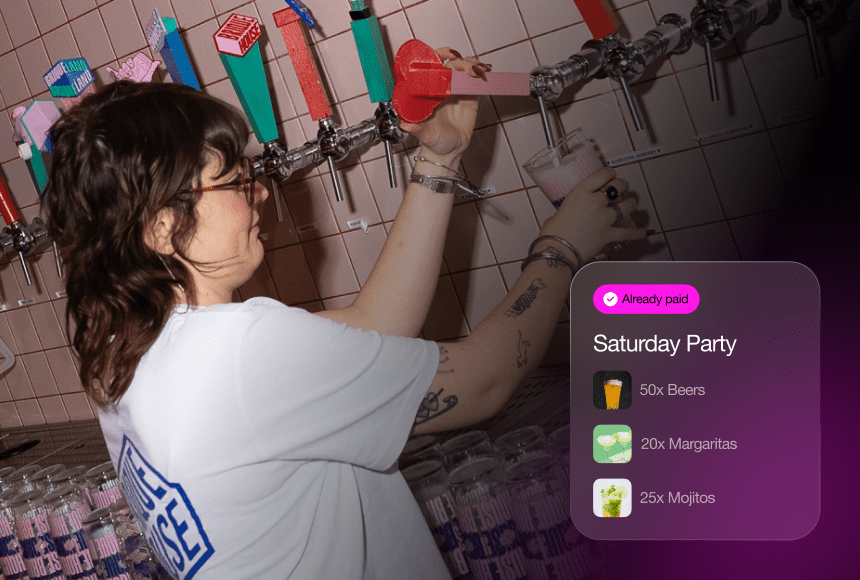
Boost Your Restaurant’s Revenue with Intelligent QR Ordering
Why QR Ordering Appeals to Diners and Owners Alike
Ever felt that moment of panic when a group of hungry guests arrives all at once? Servers hustling back and forth, orders flying around, and a constant juggling act to keep everyone happy. The world of restaurants is dynamic, fast-paced, and exhilarating—but it’s also challenging. For many owners and managers, the question of how to drive higher average checks while maintaining great guest experiences is always top of mind.
Enter QR ordering. By placing a simple code on each table, you empower guests to view menus, order items, and pay at their own pace—directly from their smartphones. In this system, diners can explore appetizing photos, detailed descriptions, and possible add-ons without feeling rushed by the ticking clock. In other words, QR ordering isn’t just a convenience: it’s an opportunity to boost revenue by encouraging more sales per guest.
Restaurants throughout the United States, from mom-and-pop eateries to bustling casual spots, have already tapped into the magic of QR ordering. It’s not merely a novelty: it’s a tool that actively helps increase average check size. If your goal is to serve up a stellar experience and see that number climb, keep reading.
The Psychology Behind “More Items, More Spend”
Have you noticed how some diners suddenly become more adventurous when they can browse the online menu at their leisure? There’s a particular psychology at work. Think of it like placing guests in front of a sprawling buffet: once they see more options, they’re more likely to go for that extra appetizer or a decadent dessert. The ability to self-order through a QR code works in a similar way.
In a traditional setting, time is often limited. A server might come by once or twice to check if anyone wants something else, and if the guests don’t speak up at that moment, the opportunity is lost. With QR ordering, however, the diner has constant access to the menu. That means they can add items whenever they feel like it—often during breaks in conversation or after they finish an appetizer and realize they’re still a bit peckish.
Moreover, research shows that the simple act of seeing tempting dishes visually can prompt additional orders. According to the National Restaurant Association, compelling visuals and detailed descriptions consistently drive higher sales for certain menu items. By integrating this into a mobile menu that’s always accessible, you shift the equation in your favor.
Real-World Data: How Much Does QR Ordering Improve Sales?
The question that often leaves restaurant owners intrigued is: “Does QR ordering really increase my bottom line?” After all, adopting new technology requires an initial investment of time and, sometimes, equipment.
The good news: studies and anecdotal evidence point to a significant boost in average check sizes. Some restaurants have reported a 15% to 20% increase in average check after introducing a QR-based ordering system, while others have hit the 25% mark. Factors that drive this boost include:
- Fewer missed opportunities: Guests no longer need to snag a passing server to add that second glass of wine or try a tempting side dish.
- In-app upselling: It’s easier to display suggestions like “Would you like bacon or avocado on that burger?”
- Visual cues: Pictures of menu items often lead diners to order more items than they would when reading plain text.
- Reduced wait times: Less waiting means guests have more time to consider additional purchases.
In fact, QSR Magazine has noted that contactless ordering systems, including QR codes, have helped many quick-service and fast-casual brands streamline operations and boost sales, specifically through more effective cross-selling. This means you can break the limitations of a traditional paper menu, offering your guests a seamless, interactive way to browse and order all your specialties.
Strategies to Increase Average Check With QR Ordering
Implementing QR ordering is a strong start, but to get the most out of this new strategy, it’s essential to optimize it. Below are key tactics that can turn a modest check into a hefty one. Think of these strategies like different spices in your kitchen: when used in the right amounts, they transform the final dish into something remarkable.
1. Design the Online Menu to Encourage Exploration
Meal decisions often hinge on a combination of emotional and practical triggers. With an online menu, you can organize entries in a more intuitive way than you can with paper. Highlight your best-selling items, introduce chef’s recommendations, or place mouthwatering photos of your signature entrées. Make it easy for guests to swipe and scroll through options.
- Clear categories: Divide the menu into sections (starters, mains, desserts, beverages). If you run promotions or have limited-time specials, give them their own space.
- Enticing descriptions: Go beyond “chocolate cake” with lines like, “Rich, moist chocolate sponge topped with velvety ganache.”
- Strategic layout: Position your most profitable or unique dishes at the top or create a featured section to capture attention immediately.
2. Incorporate Upselling and Cross-Selling Prompts
Servers have been upselling since the dawn of the service industry—“Would you like fries with that?” is practically a slogan. With QR ordering, you can embed these suggestions right into the user interface. For instance, when a customer adds a dish to their cart, the menu could prompt, “Do you want to add an extra side of seasoned fries or upgrade to a premium dipping sauce?”
Not only does this reduce the burden on staff to remember every possible upsell, but it also standardizes the way these suggestions are presented. No more missing out on potential add-ons because your server can’t get to the table in time.
3. Engage Diners with Limited-Time Specials
People love exclusivity. Whether it’s a seasonal soup or a weekly gourmet burger, highlighting a limited-time offering can create a sense of urgency. Give these specials a banner or highlight within the online menu. This approach taps into the “fear of missing out,” prompting customers to try something they might not get the chance to order again.
If you rotate specials often, consider labeling them “Today’s Exclusive” or “Weekend Special,” accompanied by pictures and short descriptions that make these picks impossible to resist. The bonus? These items often carry a higher profit margin if curated wisely.
4. Encourage Personalization
QR ordering lets you easily add personalization options for each dish—think “pick your sauce,” “choose your protein,” or “select your spice level.” When people customize their meals, they often spend more. Additionally, they feel more satisfied with their choices, since the meal aligns perfectly with their preferences. This is a win-win: you increase check size while the guest gets a tailored dish.
Highlight the flexibility: “Add grilled mushrooms for $2,” “Double the cheese for $1,” or “Make it a combo for just $3 more.” Small increments add up across multiple orders, helping you boost overall sales without pressuring the guest.
5. Create a Memorable Experience Around Ordering
The best restaurants weave atmosphere, good food, and top-notch service into an unforgettable tapestry. QR ordering might sound purely functional, but it can be designed to reflect your restaurant’s personality. Use color schemes, friendly language, or even add a few playful elements that mirror your brand.
For example, instead of a generic button that says “Add to Cart,” opt for something like “Yes, I Want This Deliciousness!” or “I’ll Take One!” as long as it aligns with your brand’s voice. Personal touches make the ordering process feel less robotic and encourage guests to linger while they decide on that extra dish or cocktail.
Overcoming Staff Concerns: Bringing Everyone on Board
Whenever a new tool enters the service landscape, you can expect some skepticism. Servers might wonder if QR ordering will reduce their tips or make their roles obsolete. On the contrary, it often frees them up to focus on higher value tasks—providing memorable tableside interactions, running food more efficiently, or sharing their expertise on daily specials. Tips can also increase as guests feel they had a streamlined ordering experience and can quickly add a gratuity through the same platform.
It’s wise to include your team in the rollout process. Let them test the system, answer their questions, and incorporate their suggestions. Many restaurants find that once their staff sees how QR ordering reduces routine tasks like repeatedly taking drink orders, they realize it gives them more time to engage meaningfully with guests. This engagement can further encourage additional spending, as servers now focus on recommending dishes instead of merely taking down orders.
Finding the Right Technology Partner
There’s a wide range of service providers for QR ordering platforms, and it’s important to choose one that aligns with your goals and brand identity. Some solutions are more comprehensive, integrating with your existing POS system and offering advanced sales features, while others are simpler. The key is to pick a partner that:
- Offers easy integration: Look for a platform that syncs smoothly with your POS system and other restaurant management tools.
- Prioritizes user experience: Your diners shouldn’t have to squint at confusing layouts or endure multiple steps just to place an order.
- Allows for customization: A solution that can be styled to match your branding not only looks professional but also fosters brand recognition.
- Provides real-time analytics: Tracking what items are selling, when, and to whom helps you fine-tune your offerings for maximum profitability.
Platforms like sunday can be a great fit for restaurants looking to modernize their payment flow and ordering process. By making it easy for customers to scan, order, pay, and tip, solutions like sunday free up valuable seating time and encourage guests to explore the menu without feeling rushed. The key is to find a tool that helps you meet your specific objectives—be it boosting dessert sales, promoting limited-time offers, or reducing the logistical headaches of traditional ordering.
Case Study: The Crab Shack’s 25% Average Check Increase
Imagine a popular seafood joint called The Crab Shack, located on a busy pier. Before QR ordering, staff members hustled to manage a steady influx of tourists and locals. Though business was good, the restaurant owner noticed some tables weren’t placing the extra orders they might want, simply because servers were too busy.
Once The Crab Shack introduced QR codes at every table, guests could browse not just the standard menu but also rotating specials, premium add-ons, and new cocktail creations. Within months, they recorded a 25% jump in average check size. Here’s how they did it:
- High-appeal visuals: Attractive photos of shrimp baskets, lobster rolls, and specialty cocktails enticed guests to order more.
- Automated upselling: Adding “loaded fries” or a “bucket of peel-and-eat shrimp” became a one-click experience.
- Promoting combos: When guests selected a main dish, the system suggested packaged deals like “Add two sides and a dessert for a bundled price.”
- Reduced friction: Nobody had to wave for the staff to place a second or third order; it was always just a scan away.
The result? Satisfied diners, reduced staff stress, and a beefier bottom line for the owner. It’s not magic—just the subtle power of convenience and strategic menu placement.
Making the Payment Experience Effortless
Even the most mouthwatering meal can end on a sour note if the payment process is slow or inconvenient. QR ordering addresses this by letting diners handle their check directly from the same interface they used to order. This means they can:
- Review their order instantly.
- Decide on a tip percentage with a single tap.
- Split the bill among multiple guests without awkward calculations.
- Pay via their chosen method, whether it’s a credit card, digital wallet, or another secure payment option.
This seamless experience shortens table turnover time and opens up your floor for more diners—a bonus that compounds your earnings. Consider this: if you can seat just one extra table per hour (because the previous party paid and left more quickly), you multiply revenue possibilities over an entire business day.
Maximizing Tips and Encouraging Repeat Visits
When guests pay with their phones, there’s usually a prompt to add gratuity before finalizing payment. Many mobile checkout systems default to suggested tip percentages (typically 15%, 18%, and 20%), which often leads to more generous tipping than if the guest had to do mental math or scribble a number on a paper slip. By presenting these options dynamically, you capture that optimal tipping moment without seeming pushy.
And it doesn’t stop at tips. QR ordering platforms can also allow guests to leave a quick review or sign up for future promotions instantly. Think about the power of capturing a guest’s satisfaction when it’s at its peak. A link to a quick Google review or a sign-up box for your newsletter can easily translate a satisfied patron into a loyal regular.
Remember, you want to deliver not just a meal but an overall experience worth coming back for. That includes the fun of exploring the menu, speedy service, and an easy way to close out the bill.
Analyzing Data to Refine Your Menu
One underrated advantage of QR ordering is the treasure trove of data it generates. From the number of times a particular dish is viewed to how often a guest sees a suggestion and actually adds an item, the data offers rich insights. You can track:
- Popular dishes: Are more people ordering the lobster ravioli or the grilled salmon?
- Add-on frequency: Which side add-ons or premium toppings are performing best?
- Timing: Is there a spike in dessert orders after 7 p.m.? Do cocktails sell better during happy hour or dinner rush?
- Guest purchasing patterns: Which items do people commonly order together?
Armed with these insights, tweaking your menu for better results becomes an ongoing process. Maybe you realize your grilled salmon is a runaway hit. You can highlight it with better photos, or even spin off a special “salmon feast” promotion. Perhaps your famous key lime pie only needs a slight push—like a bundle deal with coffee—to really take off.
This data-driven approach transforms guesswork into actionable intelligence. As a result, you refine your offerings based on what guests truly want, creating a virtuous cycle of increasing demand and satisfyingly higher checks.
Common Pitfalls (And How to Avoid Them)
QR ordering can be highly effective, but there are some missteps that can sabotage your efforts. Watch out for:
- Cluttered menus: Don’t overwhelm diners with a hundred different sections. Keep it concise, intuitive, and visually appealing.
- Poor images: Blurry or unappetizing photos are a set-back. If you’re going to incorporate images, make sure they’re high-quality.
- Lack of updates: If a dish runs out or a promotion ends, remove it promptly. Nothing frustrates a guest more than ordering something and then being told it’s unavailable.
- No staff training: If your team can’t answer questions about how QR ordering works, confusion spikes. Train them well.
Avoiding these pitfalls is simpler than you might think. Provide regular menu audits, invest in professional food photography if possible, and make sure your staff are comfortable demonstrating or explaining how to use the QR platform if guests get stuck.
When Traditional Touch Meets Digital Ease
Restaurants thrive at the intersection of tradition and innovation: the warmth of a genuine smile paired with the convenience of modern technology. QR ordering doesn’t replace the personal touch—it complements it. Servers will always play a pivotal role in ensuring guests feel welcome, guiding them through the menu, or explaining the story behind a signature dish.
The secret is to strike the right balance. Let digital ordering handle the repetitive chores, while your staff focuses on genuine hospitality—sharing daily specials, topping off water glasses, or simply chatting with regulars. This synergy between technology and team can significantly heighten the dining experience, prompting guests to stay longer, spend more, and tip generously.
You Asked, We Answered: Frequently Asked Questions
How do I get started with QR ordering in my restaurant?
You’ll want to research a few reputable providers and see which option aligns with your existing POS system. Then, plan menu digitization, add strong visuals, and prepare your team to guide customers in scanning and ordering. Once you’re set up, test it on a small scale before rolling it out restaurant-wide.
Will QR ordering cut down my staff’s tips?
Simply put, no. Many restaurants find that streamlined service and the convenience of mobile tipping can boost gratuities. Guests appreciate the option to tip quickly, and when the service is smoother, they’re happy to reward the team.
What equipment do I need?
You’ll need printable QR codes, signage, and a stable Wi-Fi connection so guests can access the digital menu. Your current POS system may require integration with the QR ordering platform. Be sure to confirm system compatibility to avoid any operational hiccups.
Is QR ordering suitable for all restaurant types?
QR ordering works exceptionally well for casual and fast-casual concepts, but it can also thrive in more upscale environments that value efficiency. The key is to balance the digital aspect with the level of personal touch guests might expect in a fine-dining setting.
How secure is QR ordering for payments?
Most reputable platforms use encrypted payment processing to protect sensitive data. Always work with a trusted provider that complies with PCI (Payment Card Industry) standards to ensure your customers’ information is safe and secure.
Can I easily change my menu prices or items?
Yes, digitized menus are simple to update in real time. If you run out of an ingredient or need to adjust pricing, the changes can be made through your system’s backend, and the updates appear instantly for diners scanning the QR code.
Will my older customers struggle with this technology?
While there may be a learning curve, most QR ordering interfaces are designed to be intuitive, with large buttons and clear instructions. Encouraging your staff to assist those who are new to scanning QR codes can help everyone feel comfortable.
Embracing QR ordering is about more than following a trend. It’s a strategic move that can help you engage customers, streamline operations, and significantly boost your average check. By focusing on both convenience and creativity—blending digital accessibility with genuine hospitality—your restaurant can stand out in a crowded market. Technology may evolve, but the love of good food and great service will never go out of style. The important thing is to keep the guest experience at the heart of every change you implement, from first scan to final bite.
Find out more today
Drop us your details below and we’ll reach out within the next 24h



